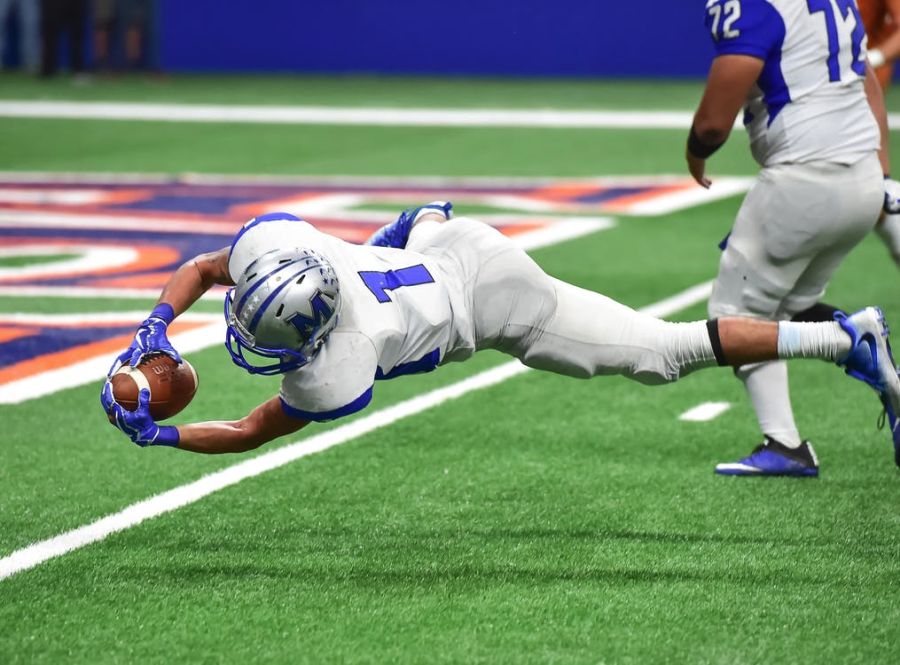Watching American Football can be a confusing thing. The game is certainly not as straightforward as European Football. But the popularity of the NFL is gaining traction on this side of the Atlantic puddle, so here is what you should know about rules of this game so that next time you are watching a game with your mates, you can understand the details of this highly-evolved sport.
FIELD POSITIONS
A team of American Football is more like a complete platoon, over 50 players to a side. But not all players will be on the field at one time. Actually, only 11 players are allowed to take the field at any one time. There will be two lineups of 11 players on a team, one playing offense and the other playing defense. Every time the possession of the ball changes the line ups also change.
There are actually 22 players on the team’s roster, then there are some specialty positions that call for additional players. After a touchdown is made, three new positions are opened, the holder(H) the long snapper(LS) and the kicker(K). The long snapper will toss the ovoid ball to the holder, who positions the ball for the kicker, who will try to kick the ball through the goal posts and gain an additional point. In addition to this specialist kicker, there may also be a punter(P) and a specialist for making kickoffs (KOS) as well. Then there may also be roles for punt returners (PR) and kick returners (KR). Then the last positions that a team may fill include the Jammer, Gunner and Up Back.
Generally speaking, one player will cover more than one position in the squad. For example, the kickoff specialist may also play the role of Punter, the wide receiver may also be the kick returner.
THE BASIC RULES
Games like soccer and rugby are non-stop action, but American football is very different and starts and stops frequently. At the beginning of each play, both teams line up in the offense or defense positions and the ball is placed on the ground between them, at what is called the “line of scrimmage”. The ball is then snapped to the Quarterback, who will decide which of his receivers or running backs he will use to move the ball forward. Each team has four attempts to move the ball forward from the line of scrimmage. If they fail to move the ball forward, the ball is given to the other team.
Each attempt to move the ball forward is called a “down”. You will often see this sequence of downs referred to on the scoreboard like this “3rd and 5”. This means it is the third “down” and the team playing offense must move the ball 5 yards.
The quarterback can be sacked further back from the original line. If the QB is sacked, also called “tackled”, behind the line of scrimmage, the yards are added to teams’ attempts to gain yards. For example, if the team playing offense is on 2nd and 5 (that’s 2nd attempt to travel 5 yards) and their quarterback is sacked 8 yards back, the line of scrimmage is moved back 8 yards and the next play will be 3rd and 13, or 3rd down and 13 yards to go.
If the offensive team succeeds in gaining the 13 yards in their third attempt, they are given another four attempts to gain 10 yards from the new line of scrimmage and this continues till the ball is brought to the endzone. For the ball to be moved and touchdowns to be made, the player must be in control of the ball. Once the touchdown has been made the team playing offense can attempt a conversion. This is kicking the ball through the field goals for an additional point. Sometimes the team will try to run the ball into the endzone to gain 2 additional points. It’s always a risky move but worth it when successful.
Possession of the Ball
Possession of the ball can switch back and forth between the teams for several very important reasons. If the team were to fail their fourth down, for example. If the QB’s pass is intercepted, that is a player from the defensive team catches the ball instead of a receiver for the offense, possession of the ball goes to the other team regardless of which down they are currently on.
Another way the ball can change possession, is on the 4th down if the offensive team’s punter takes the field and attempts to kick the ball as far down the field as possible and attempt to recover some yardage this way. A fumble is the last way the ball changes possession. If a player loses control of the ball before it reaches the ground, a player from the other team can pick it up and claim possession.
It is important to note that if the offensive team has gotten close enough to the goal line on their fourth down, they may choose to have the kicker take the field and attempt a field goal, which will be good for three points if successful.
Of course, these are just the basics to understanding the game you are about to watch. Ryan at ATS.io said things get a little more complex when discussing possession of the ball and what constitutes a legal or illegal tackle and many more points. The best way to improve your grasp of the game is by watching it more and expanding your cultural awareness.
